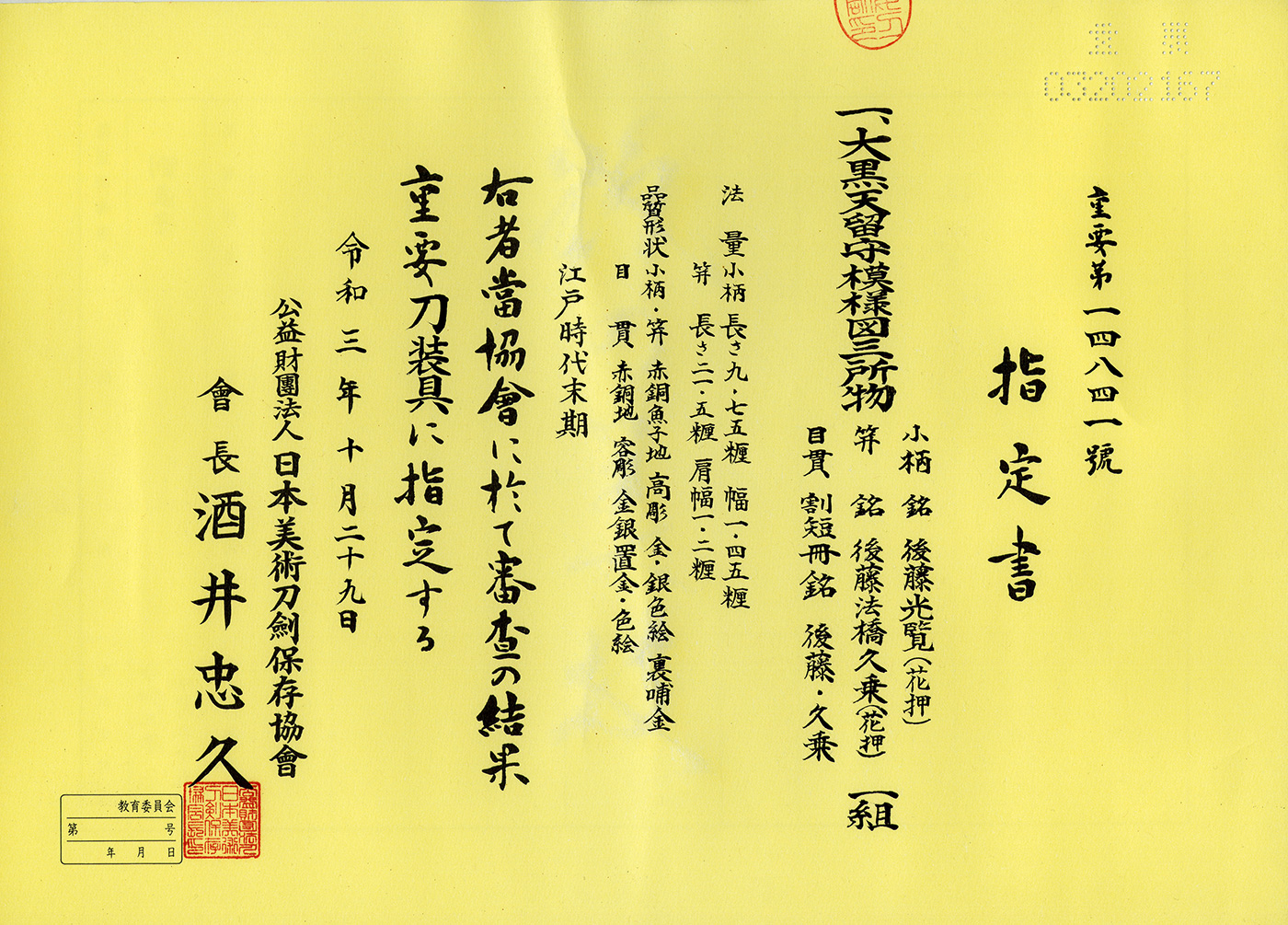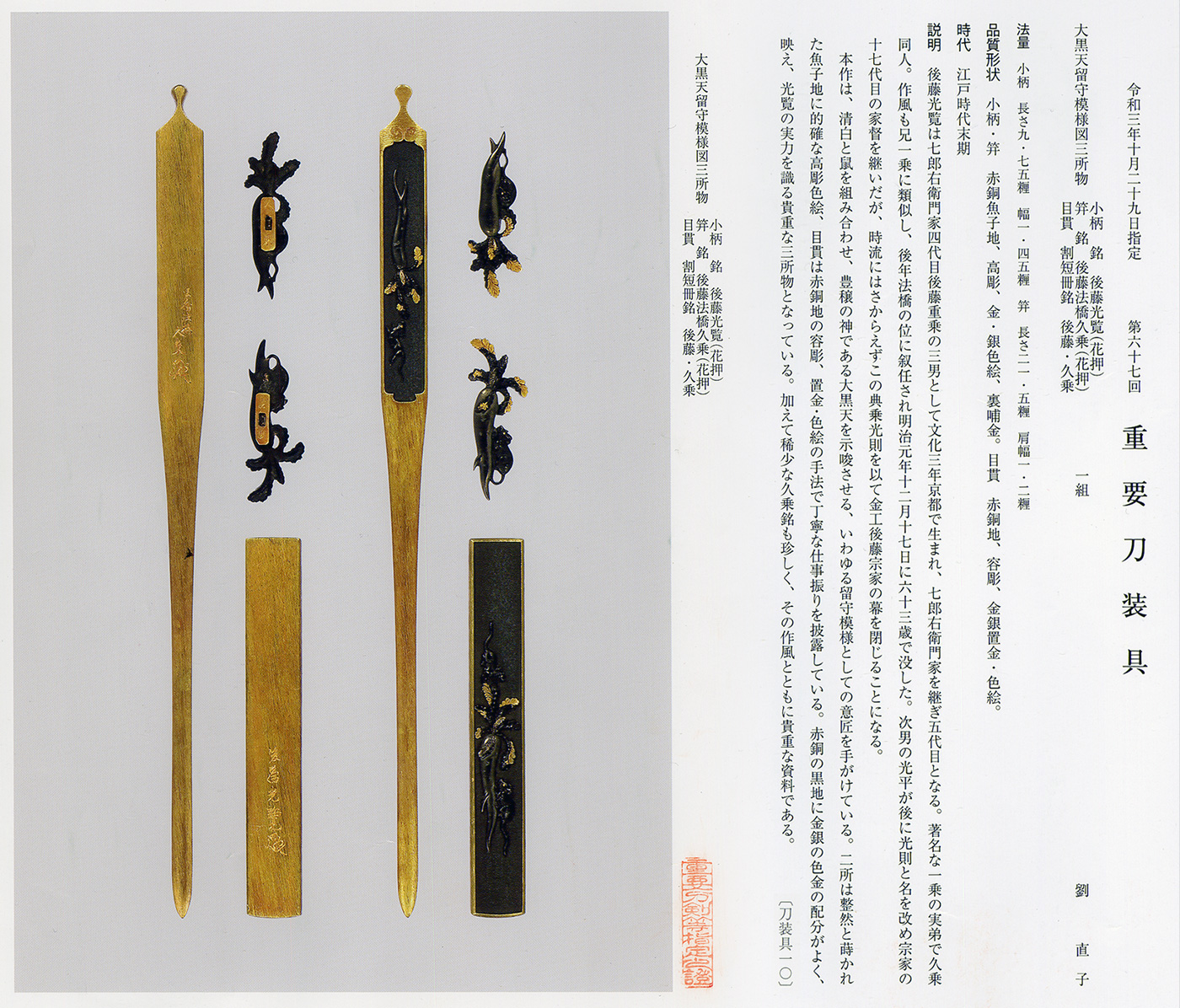Ordering number:F24084
Set of Tosogu :Kozuka, Kōgai, Menuki
(the 67th NBTHK Juyo Tosogu)
Daikokuten Rusumoyo Zu Mitokoromono
Kozuka: Goto Kojo (Kao)
Size: 3.84 inches x 0.57 inches
Features: High-relief carving of Daikokuten Rusumoyo on a red copper nanako ground, with gold and silver color painting. Gold foiled back.
Kōgai: Goto Hokkyō Hisanori (Kao)
Size: 8.46 inches x 0.47 inches
Features: High-relief carving of Daikokuten Rusumoyo on a red copper nanako ground, with gold and silver color painting. Gold foiled back.
Menuki: Split strip inscription: Goto & Hisanori
Size 1: 1.70 inches x 0.54 inches
Size 2: 1.63 inches x 0.60 inches
Features: Red copper ground with container carving of Daikokuten's guardian pattern and gold and silver placed painting.
Period: Late Edo Period
Description: Goto Kojo was born in Kyoto in the third year of the Bunka era as the third son of Goto Shigeori, the fourth generation of the Shichirouemon family. He succeeded as Shichirouemon and became the fifth generation. A younger brother of the famous Ichinori and Hisanori himself. His style was similar to his brother Ichinori, and he was later appointed to the rank of Hokkyō, passing away on December 17th of the first year of the Meiji era at the age of 63. His second son, Mitsuhira, later renamed Mitsunori, succeeded the seventeenth generation of the family head, but the family closed its curtain with Mitsunori unable to resist the current of times. This work features the guardian pattern, known as the guardian pattern, combining suzushiro (daikon radish) and rats to suggest Daikokuten, the god of abundance. Both places have neatly sown nanako grounds with precise high-relief color painting, and the menuki has container carving and placed gold on red copper. The meticulous workmanship is demonstrated through the color painting technique, with well-distributed gold and silver on the black ground of red copper, highlighting Mitsunori's capabilities. Additionally, the rare Hisanori inscription is unique, making it a valuable historical piece along with its style.
From Aoi Art: A auspicious pattern of Daikokuten's guardian
featuring suzushiro (daikon radish) and rats, the offerings of Daikokuten. The rat and suzushiro are carved in high-relief with a plump texture in golden color.
A historic masterpiece. Please cherish it as a family treasure for generations to come.
NBTHK Juyo Tosogu Paper[the 67th Juyo Tosogu]
In Kiri Box
Aoi Art estimation paper
Order Form
Related Items:
 Katana:Mumei (Nobukuni)(Juyo Token 30th session)(Koshirae:NBTHK Hozon Tosogu)
Katana:Mumei (Nobukuni)(Juyo Token 30th session)(Koshirae:NBTHK Hozon Tosogu)
 Set of Tosogu : Menuki, Fuchi Kashira, Kurikata, Kojiri.
Set of Tosogu : Menuki, Fuchi Kashira, Kurikata, Kojiri.
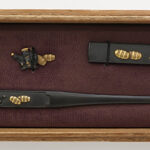 Set of Tosogu : Menuki, Kozuka, Kogai
Set of Tosogu : Menuki, Kozuka, Kogai
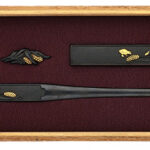 Set of Tosogu: Yoshioka Inaba Suke(NBTHK Hozon Paper)
Set of Tosogu: Yoshioka Inaba Suke(NBTHK Hozon Paper)
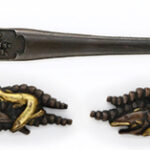 Set of Tosogu : Menuki and Kogai: Mumei(Ko Kinko)(NBTHK Hozon Paper )
Set of Tosogu : Menuki and Kogai: Mumei(Ko Kinko)(NBTHK Hozon Paper )
 Set of Tosogu : Mumei(Kyo Kanagushi/Kaga Kinko)(NBTHK Hozon Tosogu)
Set of Tosogu : Mumei(Kyo Kanagushi/Kaga Kinko)(NBTHK Hozon Tosogu)

